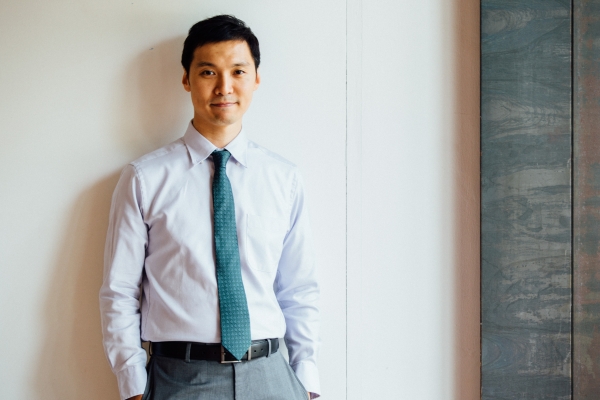
By Sim Shuzhen
SMU Office of Research & Tech Transfer – Buy, sell or hold? To make informed investment choices, investors rely on financial analysts, whose job it is to collect information about businesses, forecast earnings and target prices, and subsequently make stock recommendations.
“Financial analysts are an important information intermediary in capital markets, and are known to specialise in collecting and processing information about their covered firms,” says Assistant Professor Lin An-Ping of the Singapore Management University (SMU) School of Accountancy.
Yet, despite analysts’ important role, the factors affecting their work – such as in-house resources, connections and work-life balance – are poorly understood. Analysts are often viewed as a homogeneous group despite considerable differences in resources and working conditions across firms, adds Professor Lin.
To address this gap, Professor Lin is working on a number of research projects aimed at better understanding the role of analysts in capital markets and how they produce their research. “My current research interests fall at the intersection of financial intermediaries – including financial analysts and credit rating agencies – and their use of accounting information, including mandatory and voluntary disclosure,” he explains.
Factoring in economics
Anecdotally, analysts have often been portrayed as making overoptimistic predictions that don’t fully take economic conditions into account, says Professor Lin. The 2007-2008 global financial crisis, for example, triggered widespread investor concerns about overly bullish analyst research; news reports have also suggested that analysts tend not to budge on earnings projections, even as economists at the same firms revise theirs downwards.
To explore whether or not such portrayals are accurate, Professor Lin examined how analysts factor macroeconomic information into their research. Together with collaborators Associate Professor Artur Hugon of Arizona State University and Professor Alok Kumar of the University of Miami, Professor Lin chose to focus on how analysts react to GDP growth forecasts, since GDP is the most comprehensive indicator of macroeconomic conditions, he explains.
The researchers found that analysts tend to underreact to negative macroeconomic news – defined as a negative change in quarter-on-quarter GDP growth compared to the same quarter in the previous year – but not to positive macroeconomic news. “This finding suggests that financial analysts are indeed too optimistic during economic downturns, and is consistent with investor concerns,” says Professor Lin.
In-house interactions
The picture became more complicated, however, when the researchers went on to look at how analysts interact with macroeconomists in their firms. “Analysts who have access to active in-house economists are actually more efficient at incorporating negative macroeconomic news into their earnings forecasts—in other words, these analysts produce less optimistically biased, and thus more accurate, earnings forecasts than other analysts during economic downturns,” explains Professor Lin. This observation stands in contrast to anecdotal evidence suggesting that analysts and economists do not see eye-to-eye, he adds.
Further supporting the idea that information flows from in-house macroeconomists to financial analysts, the study also found a positive association between the quality of the macroeconomists’ research and how efficient analysts were at incorporating negative macroeconomic news, says Professor Lin. The researchers published their findings in a 2016 paper in Accounting Review, titled ‘Analysts, Macroeconomic News, and the Benefit of Active In-House Economists’.
“While earlier literature tends to assume that analysts are working in silos and focuses on how their innate expertise affects research quality, this study explores the potential effects of analysts’ internal, or within-broker, connections,” says Professor Lin. “The findings suggest the possibility for investors to identify a group of financial analysts who are likely to make more accurate earnings forecasts during economic downturns, and to use these earnings forecasts to form a better expectation about firm performance.”
Insights from social media
One of the most challenging aspects of his research is access to good data, says Professor Lin. While GDP and earnings forecasts are relatively easy to come by, information such as individual analysts' compensation, which would be extremely useful in studying analysts' economic incentives, is not normally within reach of researchers, he adds.
In recent years, however, the emergence of social media platforms such as LinkedIn and Glassdoor has yielded new sources of data and hence new avenues for research, which Professor Lin is keen to explore. For example, in a study done with SMU colleagues Assistant Professor Li Congcong and Visiting Professor Lu Hai, Professor Lin used data from LinkedIn profiles to examine the relative importance of social and technical skills in analysts’ performance and career advancement.
“While good social skills and technical skills were both associated with better performance, only good social skills were associated with better career advancement – consistent with anecdotal evidence that institutional investors tend to value soft skills over hard skills,” says Professor Lin. Alongside this study, Professor Lin is also using social media data to understand how work-life balance, gender discrimination and beauty bias affect analysts’ performance and career advancement.
Ultimately, Professor Lin’s research will translate to real-world applications that include helping to improve the accuracy of financial forecasts, or contributing to a better understanding of analysts’ professional expertise. “I’m especially interested in the kind of research that identifies problems relevant to the capital markets and proposes solutions to those problems,” he explains.
Back to Research@SMU May 2019 Issue
See More News
Want to see more of SMU Research?
Sign up for Research@SMU e-newslettter to know more about our research and research-related events!
If you would like to remove yourself from all our mailing list, please visit https://eservices.smu.edu.sg/internet/DNC/Default.aspx

